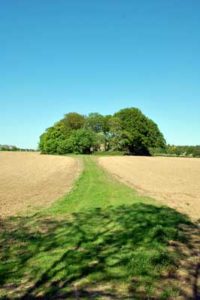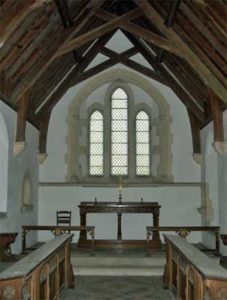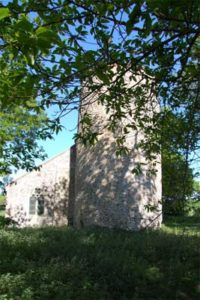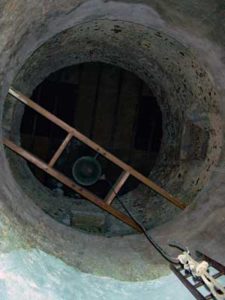Barmer All Saints






















































All Saints Church Barmer
Where to find this church
Church Information
All Saints church is located in a very remote position in the middle of a large field to the east of the B1454 Fakenham to Docking road.
This church is usually open in the summer months during daylight hours
* denotes external links that open in a new window


Visiting Barmer All Saints
All Saints Church in Barmer is really a special church, and this in more than one way. First, there is the location. There is no village “Barmer”, only the hall which is a campsite nowadays. And even though the church is close to the main B1454 road, you cannot reach it by car. You have to park near the crossroad to the campsite, and walk along mentioned road for about 300 yards; then, a bumpy path of about 100 yards to the right leads to the church. In summer, you will even not be able to see much of the church from the road, as it is well hidden behind a copse. When you arrive at this church in its little copse, you seem to have entered into another world – and this despite the close main road. It is this setting that makes this church so special for me.
On my first visit, it was open, and I took the photos from the interior you see in the slideshow. They are – as you might probably notice immediately – of a rather poor quality, but this is due to the fact that they were taken with one of my first digital cameras. On our second visit a couple of years later (this time with a proper camera) it was unfortunately locked, so the interior photographs are still the old ones, meaning we have to revisit this church to take some better photos of the interior.
This is another round tower where the top half has been rebuilt. It used to be taller with narrow pointed openings for a belfry.
There is also a pointed tower arch, indicating that the lower parts were built in the 13th century. The nave has three flint quoins, but they also include pieces of Barnack stone, which was not commercially available until the 13th century. The north aisle was probably added in the 14th century, and the present chancel was built in the late 19th century.
It was in use as a parish church until the Reformation, but was disused afterwards. In 1602, it was already a ruin, and in a dilapidated state for the next nearly three centuries. The church owes its survival to being used as a mortuary chapel in the mid 19th century. To the south of the tower arch is a tall, narrow recess, which was possibly used to store the staves, or poles, for the banners. The font is plain and circular, made of Ancaster stone, and most likely dates from the time of the restoration to a parish church in 1886. In the south-east nave, below the window is a shelf made of a black stone, supported on three octagonal stone pillars. This stone has five crosses carved on it, showing that it has been used as a mensa, or altar stone, at some time. Everything in the chancel dates from its rebuilding in 1886, except the altar rails given in 1926. It became a parish church again in 1886, but was made redundant in 1977, and passed to the care of the Norfolk Churches Trust.
Conclusion: even though it is sometimes locked, this church should be high on your "to do"-list


